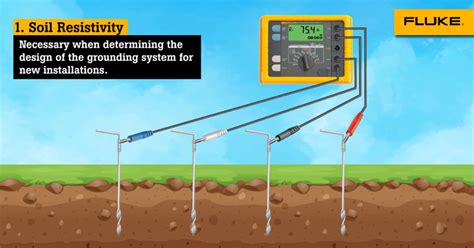earth testing method|how to test earth ground : Tuguegarao In order to test the resistance using this method, two test electrodes and an earth resistance tester are required. One of these electrodes is used to inject current into the ground and the other (potential electrode) is used to check the voltage. The . Tingnan ang higit pa Child sexual abuse is rampant in the Philippines, which activists say is partly driven by the country’s low age of consent – just 12 years old.

earth testing method,Learn about six methods of testing ground/earth resistance on existing systems, such as fall of potential, induced frequency, clamp-on, attached rod, star-delta and dead earth methods. Compare the advantages, disadvantages and applications of each method with examples and formulas. Tingnan ang higit paIn order to test the resistance using this method, two test electrodes and an earth resistance tester are required. One of these electrodes is used to inject current into the ground and the other (potential electrode) is used to check the voltage. The . Tingnan ang higit paThe attached rod technique uses a similar concept to the fall-of-potential method while maintaining the possibility to conduct the test without disconnecting the earth electrode . Tingnan ang higit paThe 3-point method requires all the connections to the earth electrode removed before conducting the test whereas . Tingnan ang higit pa
If the sphere of influence of the ground electrode is large that the sphere of influence of the current electrode is so close or the space on the testing ground is limited that acceptable spacing cannot be derived, the star-delta method can be used for . Tingnan ang higit pa Learn about the most common methods of measuring the resistance of an earth electrode, such as the 3-point, fall of potential .
Depending on the situation you’re in and what kind of ground setup you’re looking at, there are four different methods of testing earth ground resistance available. Stakeless testing. Selective testing. Soil .

Learn about four types of earth resistance testing methods: soil resistivity, fall-of-potential, selective and stakeless. Find out how to measure soil resistivity, place stakes, use clamps and interpret . Ground resistance testing, also known as earth resistance testing, is the process of measuring the resistance of a grounding system to the Earth. The purpose of .earth testing methodIn the following tutorial, we will explain how to measure, check, and test ground / earth resistance using different methods, including a multimeter, megger, and digital .
This method uses three test electrodes (current electrodes) arranged in an equilateral triangle around the existing earth electrode. An earth resistance tester injects a known current through . The principles and methods of earth resistance testing covered in this section apply to lightning arrester installations as well as to other systems that require low resistance ground connections. Such .
Earth resistivity is usually measured using the Wenner method, which involves the use of four temporary earth spikes. The spikes do not need to be moved as .An earth electrode and earth electrode resistance are defined in BS 7671 as: Earth electrode – conductive part, which may be embedded in the soil or in a specific . There are various methods to measure earth resistance on existing systems. Some of the common methods are: Fall of Potential Method. This is also known as the 3-point method or potential drop .earth testing method how to test earth groundSelective earth ground testing is a method used to measure the resistance of specific components, (such as grounding electrodes or connections.) within an earthing (grounding) system using one clamp and two stakes. Rather than testing the entire grounding system, this approach allows for the targeted assessment of individual grounding elements. .
how to test earth ground The principles and methods of earth resistance testing covered in this section apply to lightning arrester installations as well as to other systems that require low resistance ground connections.Such . Earth resistance testers that support both the full fall-of-potential method and the simplified 62% technique have been available for some time, but a recent development of particular interest to electrical contractors is the provision of earth resistance testing facilities in multifunction installation testers.(Other standards may Fall-of-potential or three-terminal earth resistance test... 27 12 Dead earth method or two-point earth resistance test... 27 13 Effect of C location on the earth resistance curve... 31 14 Example of how C location affects the earth resistance curve ... 32 15 Earth resistance decreases with depth of electrode in .Before starting any earth resistance measurements, the maximum value for correct earthing needs to be measured. There are six basic test methods to measure the earth resistance: 1. Four-point method (Wenner method) 2. Three terminal methods (falloff potential method/ 68.1% method) 3. Two-point method (dead earth method)An alternative to the clamp-on test is the “comparative method” which uses the standard 4 pole test method. In this test the C1 and P1 terminals of the composite tester are connected to an existing low resistance earthing electrode such as an existing substation earth grid or LV earth. The C2 and P2 terminals are then connected to the .The dead earth method is the simplest way to make an earth resistance test. With this method, resistance of two electrodes in series is measured — the driven rod and the water system. But there are three important limitations: The waterpipe system must be extensive enough to have a negligible resistance.
earth testing method|how to test earth ground
PH0 · how to test earth ground
PH1 · how to measure earth resistance
PH2 · how to check earth resistance
PH3 · earth to ground resistance testing
PH4 · earth ground resistance testing procedures
PH5 · earth electrode testing procedure
PH6 · earth electrode test method 2
PH7 · earth electrode resistance test
PH8 · Iba pa